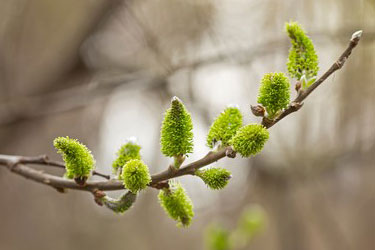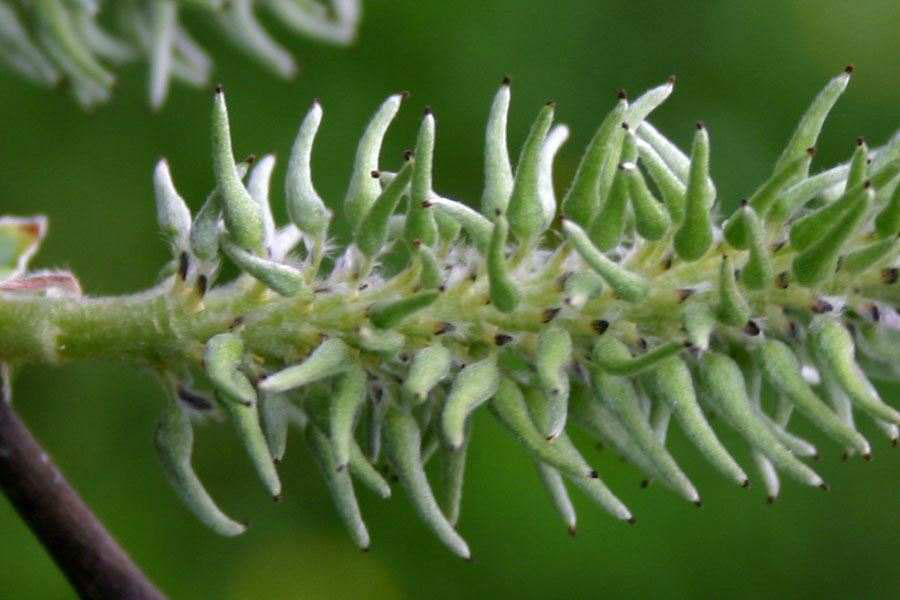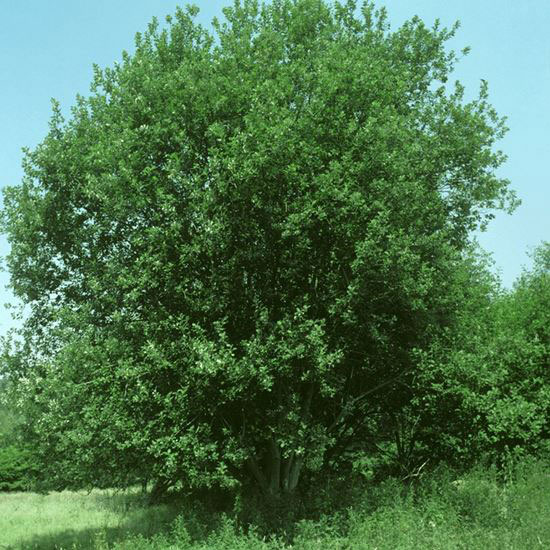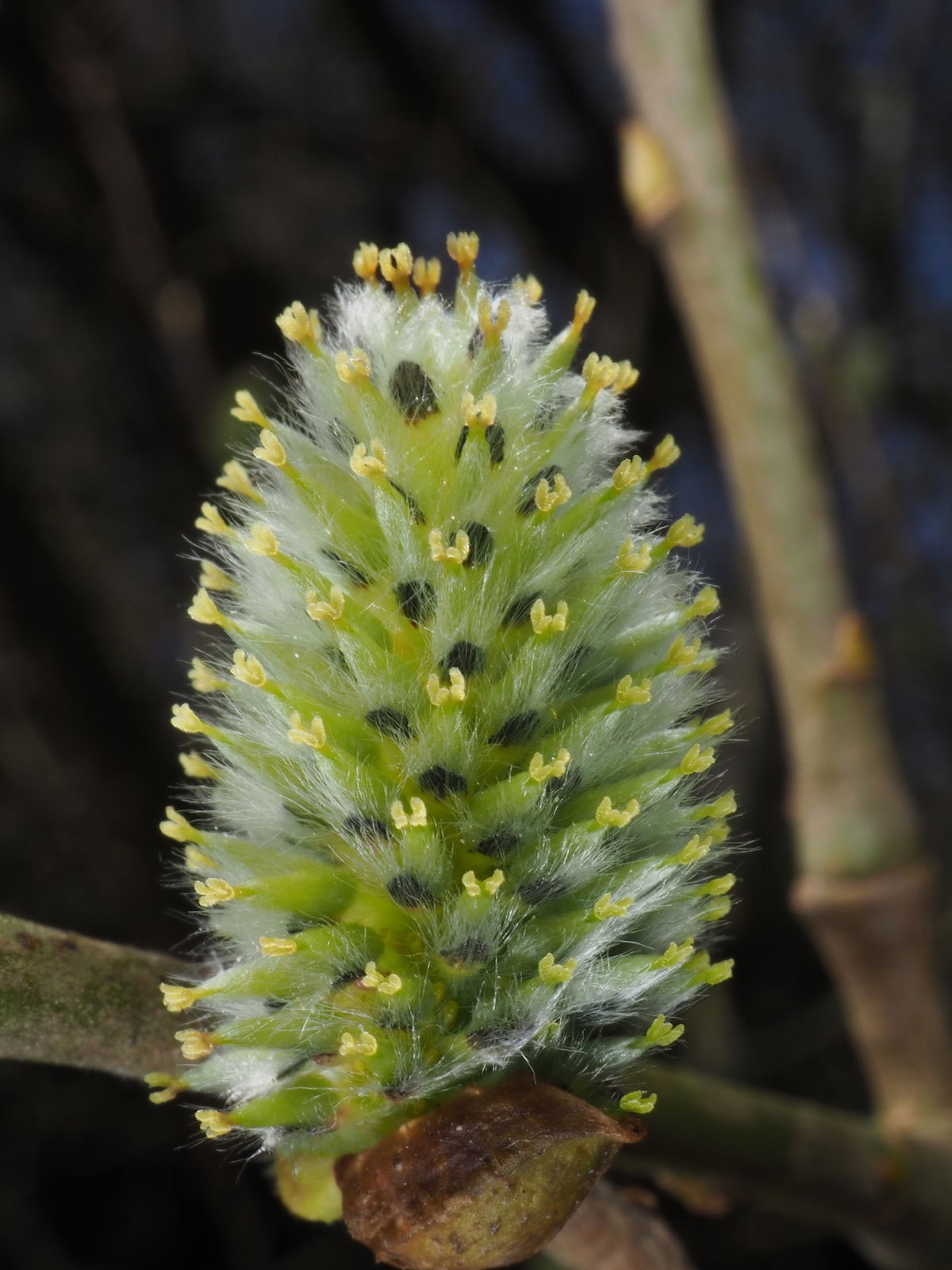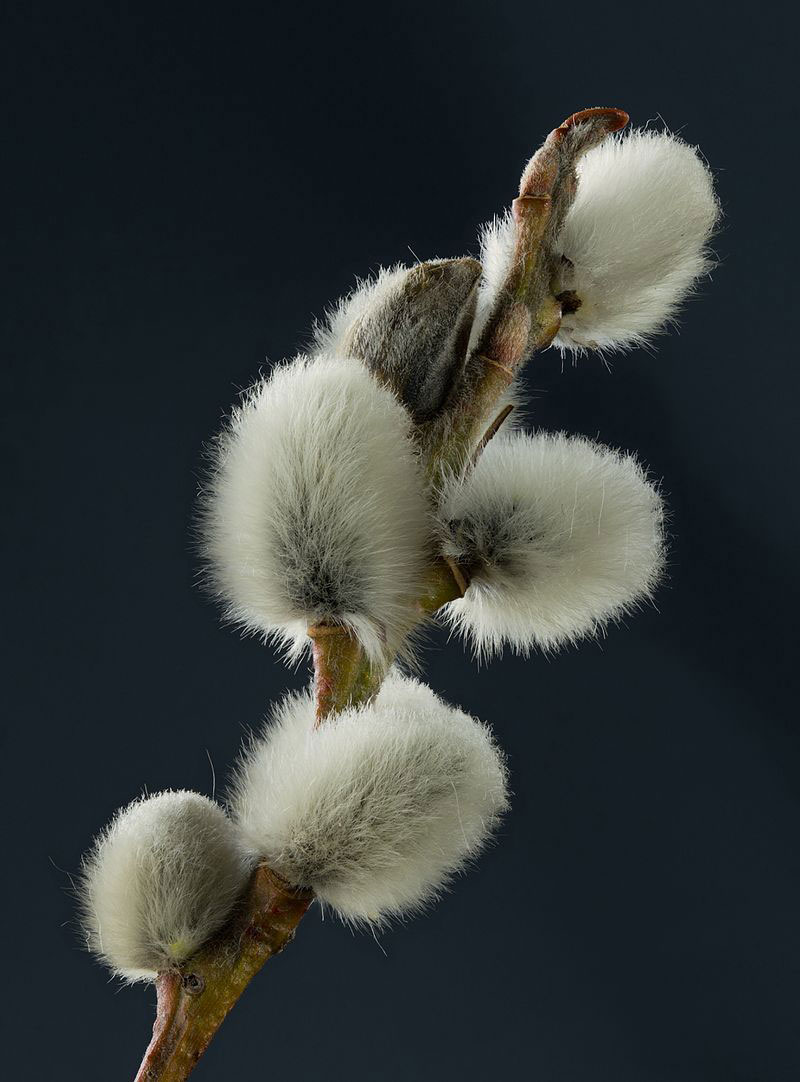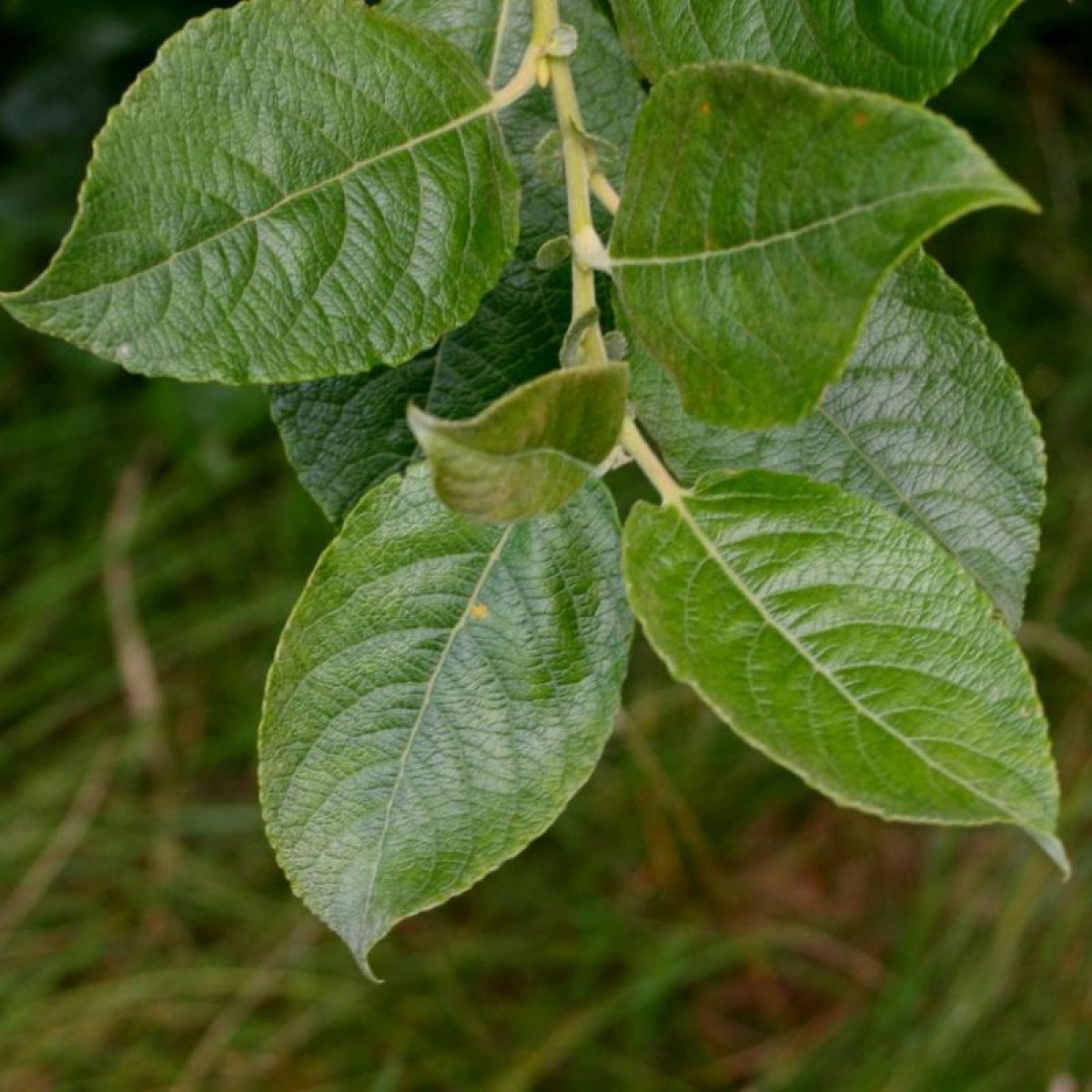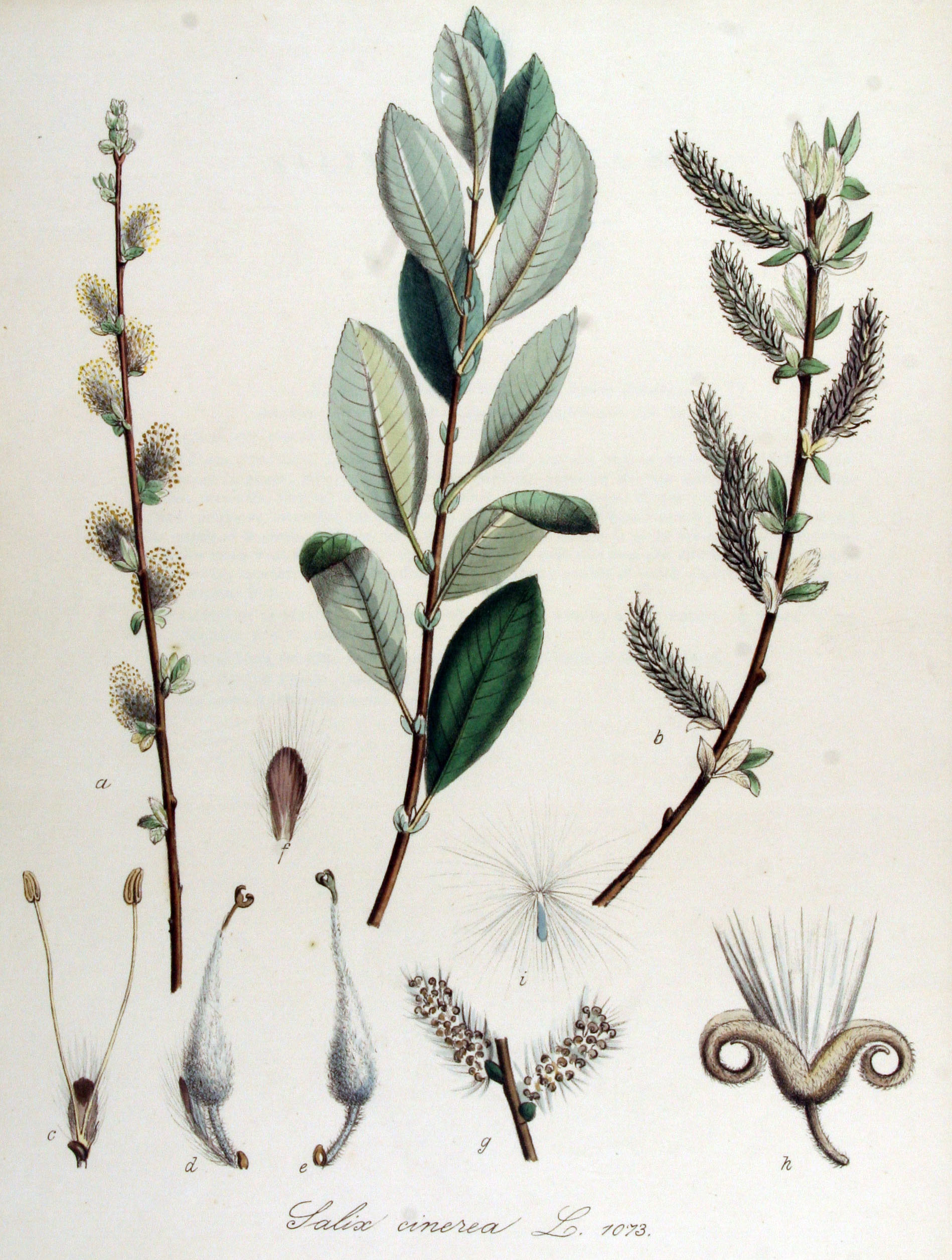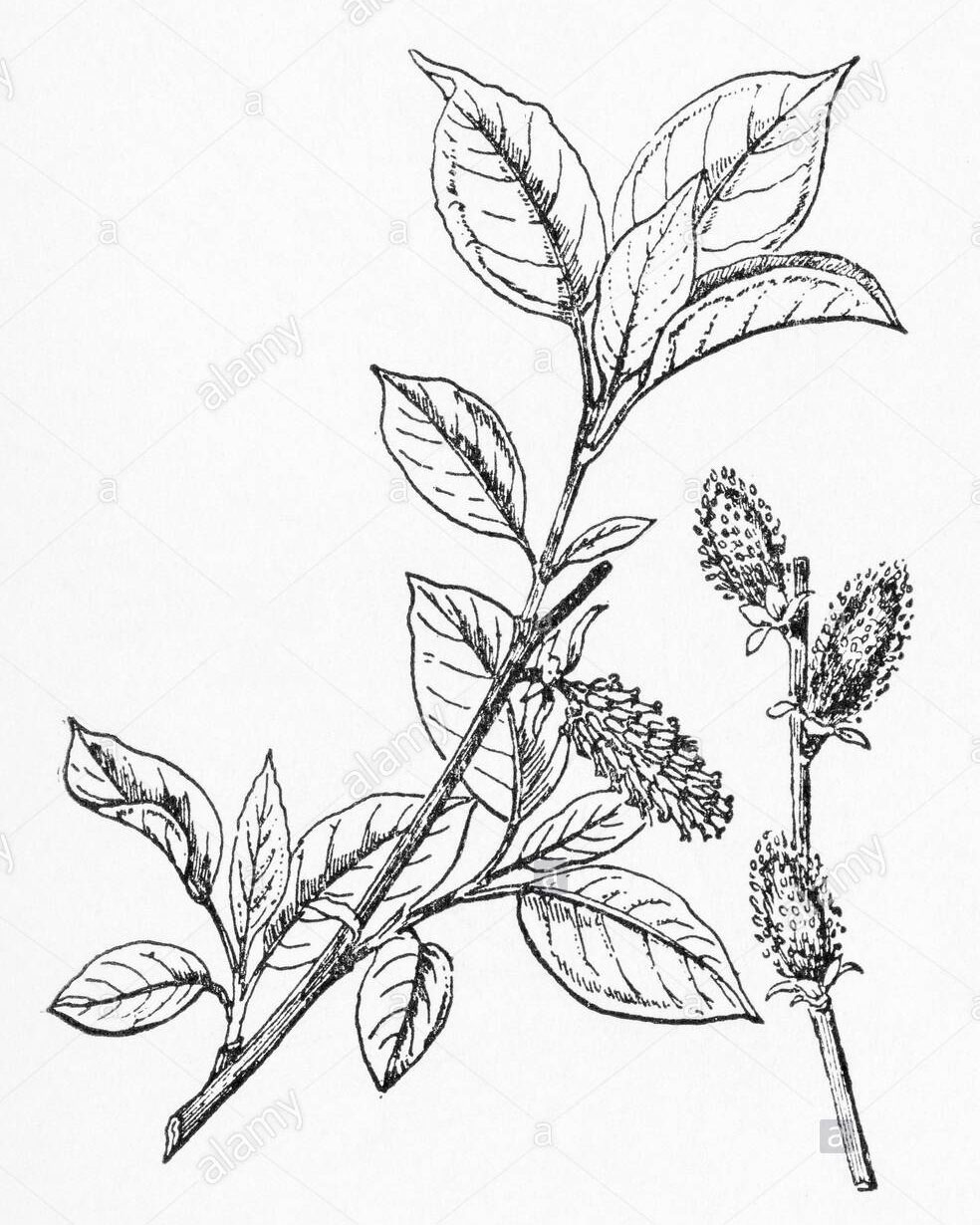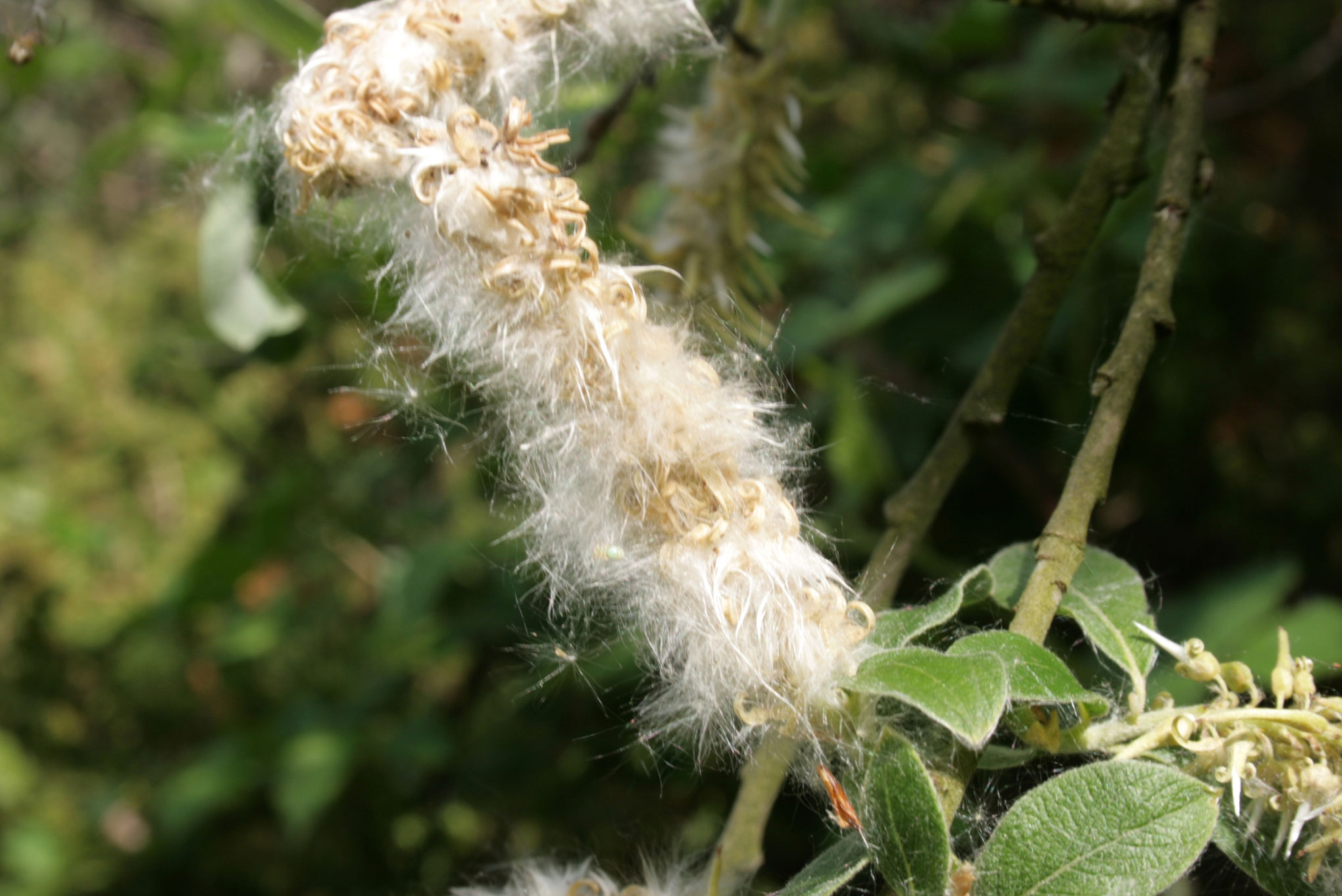| Grey sallow Quick Facts | |
|---|---|
| Name: | Grey sallow |
| Scientific Name: | Salix cinerea |
| Origin | Europe, including Britain, from Scandanavia south and east to France, Siberia and Iran and also Russia and western Asia |
| Colors | Grayish green |
| Shapes | Small densely hairy capsule with two valves that is up to 10 mm long containing several tiny seeds |
| Taste | Rather bitter taste |
| Health benefits | Rheumatism, arthritis, gout, inflammatory stages of auto-immune diseases, diarrhea, dysentery, feverish illnesses, neuralgia and headache. |
| Name | Grey sallow |
|---|---|
| Scientific Name | Salix cinerea |
| Native | Europe, including Britain, from Scandanavia south and east to France, Siberia and Iran and also Russia and western Asia (i.e. Turkey, Azerbaijan and Kazakhstan) |
| Common Names | Grey Willow, large gray willow, common sallow, grey sallow, grey-leaved sallow, large grey willow, pussy willow, rusty sallow, european gray willow, gray sallow |
| Name in Other Languages | Albanian: Shelg Azerbaijani: Külvari söyüd Basque: Sahats hauskara Bulgarian: Siva vŭrba (сива върба) Catalan: Gatell, gatsalze, salze Chinese: Hui liu (灰柳), Huī máo liǔ (灰毛柳) Cornish: Helyk loos Croatian: Siva vrba, pepeljasta vrba Czech: Vrba popelavá Danish: Graa pil, rust pil Dutch: Grauwe wilg, Grauwe wilg en rossige wilg English: Common sallow, Gray sallow, Grey sallow, Gray willow, Grey willow, Pussy willow, Rusty sallow, Large gray willow, Ashy willow, scilla Estonian: Tuhkur paju Finnish: Tuhkapaju French: Saule cendré, Saule gris, Osier cendré, Osier gris, gévrine, German: Aschweide, Asch-Weide, Grauweide, Grau-Weide, aschgraue Weide, Werftweide Greek: Stachtoïtiá (Σταχτοϊτιά) Hungarian: Hamvas fűz, rekettyefűz Icelandic: Gráselja Irish: Saileach liath Italian: Salice cerognolo, Salice cenerognolo (Toscana), Salice cinereo, salice cenerina, salice acuminato, salice cenerino, salice selvatico Latvian: Pelēkais kārkls Lithuanian: Pilkasis karklas Netherlands: Grauwe wilg Northern Sami: Ránessieđga, Gråselje Norwegian: Graavie, Selje-vie, Gråselje, Persian: بید خاکستری بزرگ Polish: Wierzba szara , łoza Portuguese: Salgueiro-cinzento , vimeiro-cinzento Romanian: Zălog Russian: Iva pepel’naia (Ива пепельная), iva seraya (ива серая) Serbian: Siva vrba (сива врба) Slovakia: Vrba popelavá Slovenia: Pepelnatosiva vrba Spanish: Sauce ceniciento, sarcino Swedish: Gråvide, Tuhkapaju, Vanligt gråvide Turkish: Boz söğüt Udmurt: Purys’ bad’ (Пурысь бадь) Ukrainian: Verba popelyasta (Верба попеляста) Upper Sorbian: Šěra wjerba Welsh: Helyg Llwyd, Helygen Lwyd |
| Plant Growth Habit | Large deciduous shrub or small spreading tree |
| Growing Climates | Occur in permanently or seasonally wet, inundated or waterlogged sites, fenland, carrs and occasionally in damp woods especially as sunny edges, wetlands and drainage lines, swamps, riverbanks, behind coastal dunes, riparian habits, brackish wetlands on coastlands, wet forests, alpine bogs, disturbed and undisturbed lands, stream shores, mesic woodlands, gravelly or sandy beaches, waste ground |
| Plant Size | 1-2 m tall, rarely a small tree 7 (-10) m high. |
| Bark | Dark grey to dark grey-brown, smooth when young becoming fissured with age |
| Twigs | Dark reddish-brown, and densely pubescent when young, becoming glabrous when 2 years old. |
| Leaf | Alternately arranged leaves are borne on short stalks about 2-5 mm long. These leaves are 0.8-3.5 in (2-9 cm) long and 0.4-1.2 in (1-3 cm) wide and are oval (i.e. elliptic) or egg-shaped in outline (i.e. obovate) with entire to finely toothed (i.e. serrulate) margins and shortly-pointed tips |
| Flowering season | March to April |
| Flower | Separate male and female flowers are usually borne on separate plants (i.e. this species is dioecious), but may occasionally be present on different parts of the same plant (i.e. rarely monoecious). Both types of flowers are inconspicuous and are densely arranged in stalk less clusters (i.e. sessile catkins) in the upper leaf forks |
| Fruit Shape & Size | Small densely hairy capsule with two valves that is up to 10 mm long containing several tiny seeds |
| Fruit Color | Grayish green |
| Propagation | By seed and stem fragments |
| Varieties |
|
| Taste | Rather bitter taste |
| Plant Parts Used | Bark, Buds, catkins, young, fresh shoots, leaves |
| Season | May to June |
Plant Description
Grey sallow is a large deciduous shrub or small spreading tree that normally grows about 1-2 m tall, rarely a small tree 7 (-10) m high. Tree is generally much branched from the base forming a broad, rounded crown. Bark is dark grey to dark grey-brown, smooth when young becoming fissured with age. Twigs are dark reddish-brown, and densely pubescent when young, becoming glabrous when 2 years old. Its distinct feature is the long ridges visible on branches when the bark is removed. The plant is found growing in permanently or seasonally wet, inundated or waterlogged sites, fenland, carrs and occasionally in damp woods especially as sunny edges, wetlands and drainage lines, swamps, riverbanks, behind coastal dunes, riparian habits, brackish wetlands on coastlands, wet forests, alpine bogs, disturbed and undisturbed lands, stream shores, mesic woodlands, gravelly or sandy beaches and waste ground.
Stem
The bark on the stems is smooth and greyish-brown in color, but eventually becomes fissured with age. Younger stems are green, greenish-brown or dark reddish-brown in color and may be hairy (i.e. pubescent) or virtually hairless (i.e. sub-glabrous).
Leaves
The alternately arranged leaves are borne on short stalks about 2-5 mm long. These leaves are 0.8-3.5 in (2-9 cm) long and 0.4-1.2 in (1-3 cm) wide and are oval (i.e. elliptic) or egg-shaped in outline (i.e. obovate) with entire to finely toothed (i.e. serrulate) margins and shortly-pointed tips (i.e. acute apices). Their upper surfaces are bright green and sparsely hairy (i.e. sparsely pubescent), while their undersides are pale green or bluish-green (i.e. glaucous) and more densely hairy (i.e. densely pubescent).
Flowers
Separate male and female flowers are usually borne on separate plants (i.e. this species is dioecious), but may occasionally be present on different parts of the same plant (i.e. rarely monoecious). Both types of flowers are inconspicuous and are densely arranged in stalk less clusters (i.e. sessile catkins) in the upper leaf forks. They do not have any sepals or petals, but each flower is subtended by a small bract. The male flowers are green or greenish-yellow in color and borne in relatively short clusters that are 2-3 cm long and about 2 cm across. They are about 10 mm long and consist of two or more yellow stamens. The female flowers are mostly green in color and are usually borne in slightly longer clusters that are 2-4 cm long. They consist of an ovary topped with a stigma. Female flowers are longer and narrower than the male. Flowers are produced before the new leaves in early spring. Flowering normally takes place in between March and April.
Fruit
Once pollinated by wind, female flowers are followed by a small grayish green and densely hairy capsule with two valves that is up to 10 mm long containing several tiny seeds. These seeds, which are topped with a tuft of silky hairs, are shed about four weeks after flowering. Small size of the seeds along with the hairs helps in the dispersing. The seeds need bare soil to germinate.
Two Varieties
There are two subspecies:
Salix cinerea subsp. Cinerea
It is found in Central and Eastern Europe and western Asia. It is a shrub about 4–6 m (rarely 10 m) tall, with smooth bark. Leaves are densely hairy below with pale yellow-grey hairs. Stipules are large, persistent until autumn.
Salix cinerea subsp. Oleifolia
It is found in Western Europe and northwest Africa. It is a shrub or tree about 10–15 m tall, with furrowed bark. Leaves are thinly hairy below with dark red-brown hairs. Stipules are small and early deciduous.
Traditional uses and benefits of Grey Sallow
- Fresh bark of all members of this genus consists of salicin, which possibly decomposes into salicylic acid (closely related to aspirin), in the human body.
- It is used as an anodyne and febrifuge.
- The bark of this species is used interchangeably with S. Alba.
- Bark is taken internally in the treatment of rheumatism, arthritis, gout, inflammatory stages of auto-immune diseases, diarrhea, dysentery, feverish illnesses, neuralgia and headache.
- The bark is removed during the summer and dried for later use.
- The leaves are used internally in the treatment of minor feverish illnesses and colic.
- The leaves can be harvested throughout the growing season and are used fresh or dried.
- Bark was commonly chewed on in order to relieve pain associated with a headache and toothache.
Other Facts
- Plants have an extensive root system and are used to stabilize waste tips and old slag heaps.
- Seeds are very light and so can travel some distance in the wind.
- The plant is therefore able to find its way to areas such as cleared woodland where the soil has been disturbed.
- The dried twigs with the leaves attached were once used as animal feed.
- It has been used extensively for riverbank protection and soil stabilization, also in shelterbelts, and some have ornamental value, and apparently there are no alternative to willows for flood protection.
Management Tips
Mechanical
Cremer gives a brief overview of a variety of mechanical control procedures that can be used in the control of smaller infestations of S. cinerea and other willow species but for larger invasions chemical methods will yield best results. The author reports that S. cinerea less than 1 meter tall and few in number can be pulled out by hand. Roots that remain do not sucker but buried portions of stems may take root and must also be pulled out. Use of heavy machinery can be effective but is not advisable on wet sites if the accidental incorporation of broken, live branches into the ground cannot be kept to a minimum. S. Cinerea can be felled, but except for some large, old willows the remaining stump usually coppices (produces shoots). The green crowns can be burnt immediately after felling (fire restrictions permitting). Burning may be an option if the tree can be completely girdled by fire at ground level; however young trees tend to sprout from the buried portion of their stem. Grazing can retard young S. Cinerea growth but will rarely kill the plant.
Chemical
Cremer report that, the main method of controlling S. Cinerea is injection of stems with the weedicide Glyphosate. Painting of freshly cut stems with Glyphosate is particularly effective and the spraying of foliage of shorter plants (< 2m tall) is often effective as well. S. Cinerea can occasionally be resistant to this treatment of painting freshly cut stems and may need to be painted several times. Effectiveness is increased if the bark is also sprayed if it is thin or stripped if it is thick (Cremer, 1999).
Biological
The introduction of a biological agent has been considered for control of S. Cinerea in New Zealand, but opposition to the intentional introduction of further nonnative organisms is likely. As other countries explore the possibilities of biological control agents, similar opposition will most likely arise also.
Harman has researched and identified a varying number of possible biological control agents for S. Cinerea. The author gives a brief introduction and background on these species and while many species appear promising, extensive research is needed before any agent is ever released. First, each varying degrees of research must be conducted to determine which species have a narrow host range. This is critical to the success of a biological control program for S. Cinerea in New Zealand. There are many Salix hybrids that are beneficial and are used extensively for riverbank protection and soil stabilization and any introduced agent must be specific enough to not damage desirable hybrids and other species present in New Zealand.
References:
https://www.itis.gov/servlet/SingleRpt/SingleRpt?search_topic=TSN&search_value=22519#null
https://npgsweb.ars-grin.gov/gringlobal/taxon/taxonomydetail?id=32699
https://pfaf.org/User/Plant.aspx?LatinName=Salix+cinerea
https://plants.usda.gov/home/classification/67666
http://www.efloras.org/florataxon.aspx?flora_id=1&taxon_id=200005797
http://www.theplantlist.org/tpl1.1/record/kew-5001635
https://keyserver.lucidcentral.org/weeds/data/media/Html/salix_cinerea.htm
https://en.wikipedia.org/wiki/Salix_cinerea
https://gd.eppo.int/taxon/SAXCI



